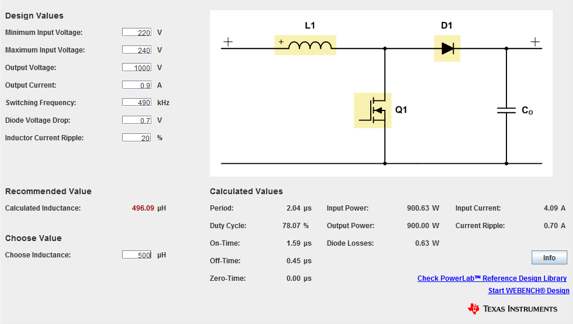I have a challenge to push 500 Watts (15V) at 100 meters of telco telephone cable (0.088mm2, 28 AWG, 200Ohm/km, 500MOhm insulation).
The only way to achieve this is by boosting the voltage up to nearly 1kV and then - back to 15V.
The problem is that on the sinking side I have a very limited space (flat-hand barely fits), so cannot use any transformers.
Several sources on SMPS design seem to propose isolated topologies (is this for safety reasons?).
SMPS topology can be chosen from any type (yet, I'd prefer simplicity):
- Boost or Buck
- DCM Flyback
- Forward Push-Pull
- Half-Bridge
- Resonant LLC
looking to this source, however, 1-3 is recommend for sub 150 Watt range. The rest are ok for 500 Watts, but all contain transformers which I cannot fit into the BUCK (not sure it that is a correct term to identify voltage down-conversion).
Ripple or EMI specs are of least importance (brushless motor will be powered). Conversion efficiency, however, does matter.
I'd feed a rectified and smoothed AC input into the boost converter. I'd replace diodes with kV MOSFETS and would likely introduce synchronous functionality. Inductor would probably require a careful winding to consider spark gap for the given voltages.
Could you please comment if this is a very bad choice?
By considering the constraints, what alternatives do I have on the BUCK-side then?
And I'd simply convert it down, most likely in synchronized fashion too.


